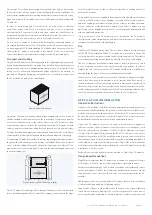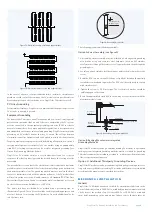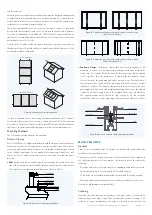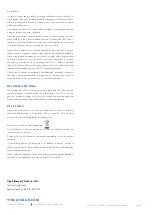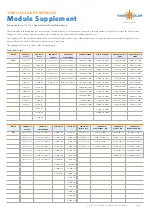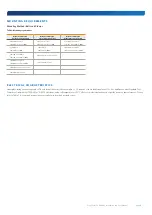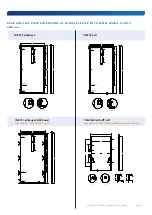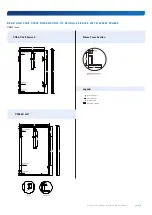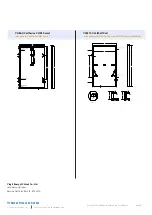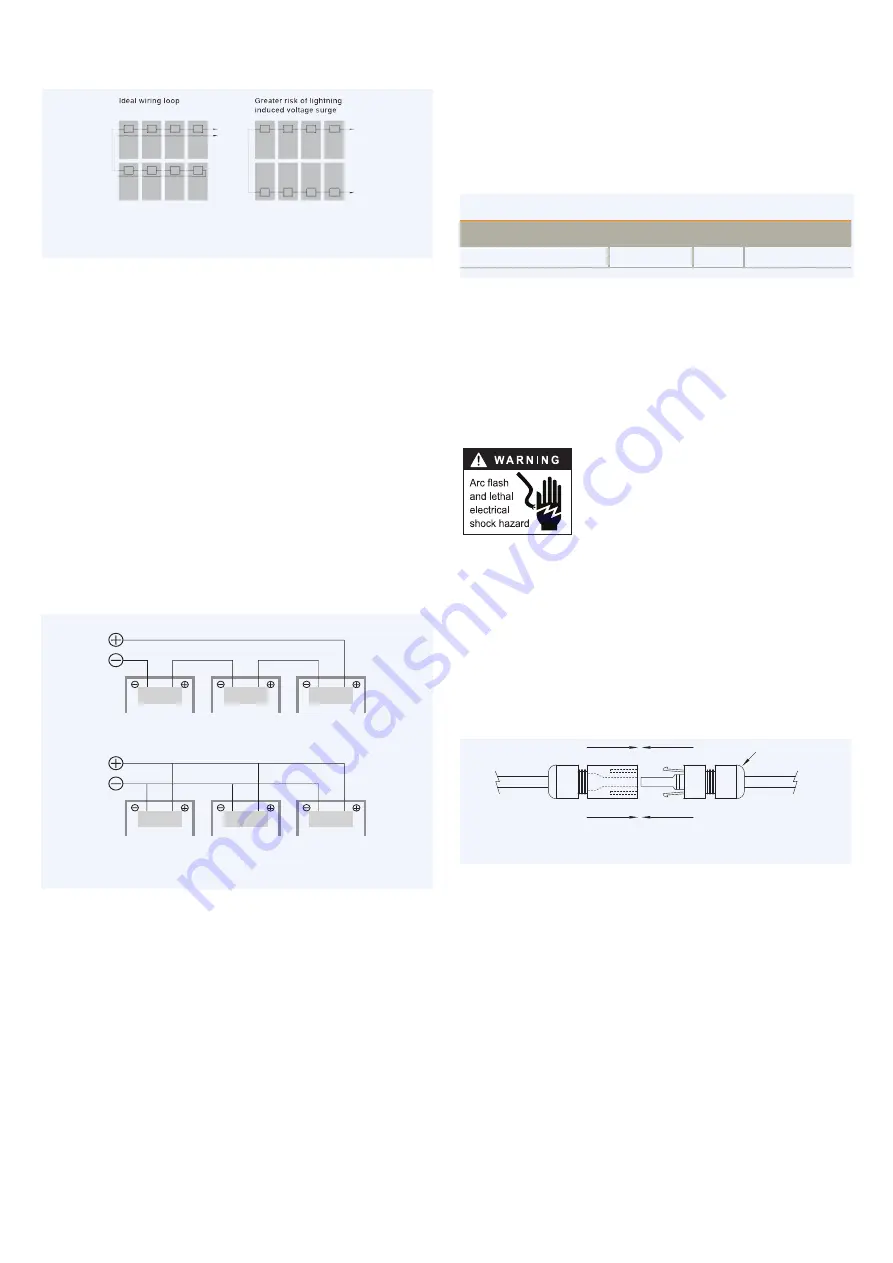
Yingli Solar PV Modules, Installation and User Manual
page 3
Figure 4: Wire loop design recommendation
Series wiring (voltage additive)
Parallel wiring (current additive)
of lightning induced voltage surges.
E L E C T R I C A L I N S TA L L AT I O N
Electrical Configuration
Under normal conditions, a photovoltaic module is likely to experience
conditions that produce more current and/or voltage than reported at Standard
Test Conditions (STC: 1000 W/m
2
, AM 1.5, and 25°C cell temperature). The
short-circuit current (ISC) should be multiplied by a factor of 1.25 and the open-
circuit voltage (VOC) should be multiplied by a factor of up to 1.25 based on
the lowest ambient temperature recorded for the installation location when
determining component voltage ratings, conductor current ratings, fuse sizes,
and size of controls connected to the PV output.
Voltages are additive when PV modules are connected directly in series,
and module currents are additive when PV modules are connected directly
in parallel, as illustrated in Figure 5. PV modules with different electrical
characteristics must not be connected directly in series. The use of suitable
third-party electronic devices connected to PV modules may enable different
electrical connections and must be installed according to the manufacturer’s
specified instructions.
Figure 5: Electrical diagrams of series and parallel wiring
The maximum number of PV modules that can be connected in a series string
must be calculated in accordance with applicable regulations in such a way that
the specified maximum system voltage of the PV module and all other electrical
DC components will not be exceeded in open-circuit operation at the lowest
temperature expected at the PV system location.
An appropriately rated overcurrent protection device must be used when the
reverse current could exceed the value of the maximum fuse rating of the
module. An over current protection device and anti-reflection diode module
are required for each series string if more than two series strings are connected
in parallel.and reverse polarity is forbidden.
Cables and Wiring
Yingli Solar PV modules are provided with two (2) stranded, sunlight
resistant output cables that are terminated with PV connectors ready for
most installations. The positive (+) terminal has a female connector while the
negative (-) terminal has a male connector. The module wiring is intended for
series connections [i.e. female (+) to male (-) interconnections], but can also be
used to connect suitable third-party electrical devices that may have alternative
wiring configurations so long as the manufacturer’s instructions are followed.
Use field wiring with suitable cross-sectional areas that are approved for use at
the maximum short-circuit current of the PV module. Yingli Solar recommends
installers use only sunlight resistant cables qualified for direct current (DC)
wiring in PV systems. The minimum wire size should be 4mm
2
.
Table 1: Required minimum field wiring specifications
Testing Standard
Wire Size
Temperature Rating
Required Minimum Field Wiring
EN 50618
4mm
2
-40ºC to +90ºC
Cables should be fixed to the mounting structure in such a way that mechanical
damage of the cable and/or the module is avoided. Do not apply stress to the
cables. Do not bend cables to a bending radius of less than 40mm. For fixing,
use appropriate means, such as sunlight resistant cable ties and/or wire
management clips specifically designed to attach to the PV module frame.
While the cables are sunlight resistant and waterproof, where possible, avoid
direct sunlight exposure and water immersion of the cables.
Connectors
Keep connectors dry and clean, and ensure that
connector caps are hand tight before connecting
the modules. Do not attempt making an electrical
connection with wet, soiled, or otherwise faulty
connectors. Avoid sunlight exposure and water
immersion of the connectors. Avoid connectors resting
on the ground or roof surface.
Faulty connections can result in arcs and electrical shock. Check that all electrical
connections are securely fastened. Make sure that all locking connectors are
fully engaged and locked.
Modules must not be interconnected using connectors from different
manufacturers and / or of different types. If modules having such different
connectors need to be interconnected, a qualified professional may replace
connectors according to the manufacturers’ specified instructions such that an
interconnection can be made with connectors from the same manufacturer and
the same type.
Figure 6: Series interconnection of a male (-) and female (+) connector
Bypass Diodes
The junction boxes used with Yingli Solar PV modules (not Smart Hot Spot Free
module) contain bypass diodes wired in parallel with the PV cell strings. In the
case of partial shading, the diodes bypass the current generated by the non-
shaded cells, thereby limiting module heating and performance losses. Bypass
diodes are not overcurrent protection devices.
Bypass diodes divert current from the cell strings in the event of partial shading.
See Figure 7-1 for a diagram showing how the cell strings are electrically
connected with the diodes.
Every piece of cells from Yingli Smart Hot Spot Free module parallels
a diode, with a cell is covered by shade or occurs an excepion, the
paralleled diode can bypass this cell, thus avoid hot spot, and can retain
the maximum power output.
Bypass diodes divert current from a cell in the event of partial shading, See
figure 7-2 for a diagram showing how the cells are electricallly connected
with the diodes.
Fully engage and lock
Cap
+
–


